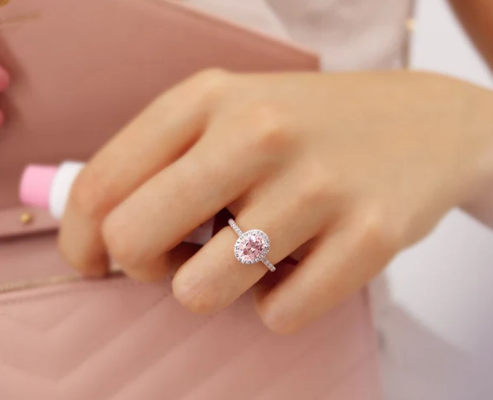Luxury fashion has always captivated the imagination and desires of many, representing the pinnacle of style, exclusivity, and craftsmanship. High-end brands like Chanel, Louis Vuitton, Gucci, and Hermès have become synonymous with luxury, each piece telling a story of meticulous artistry and unparalleled quality. Understanding the appeal of luxury fashion goes beyond mere aesthetics; it delves into the realms of history, craftsmanship, and the intangible allure that these brands command. This exploration examines the intricate appeal and exceptional craftsmanship that define luxury fashion.
The Allure of Luxury Fashion: Exclusivity and Prestige
Exclusivity and Status Symbol: One of the most significant factors contributing to the allure of luxury fashion is the sense of exclusivity it provides. High-end brands often produce limited quantities of their products, creating a sense of rarity and uniqueness. This exclusivity is a key element in the desirability of luxury items. Owning a piece from a renowned fashion house is not just about possessing a beautifully crafted item; it’s about being part of an elite group that values and can afford such exclusivity.
Luxury fashion also serves as a status symbol. Wearing or owning luxury items signals a certain level of success and social standing. This perception is deeply ingrained in societal norms, where luxury brands are often associated with wealth, power, and sophistication. The branding and marketing strategies of luxury houses reinforce this notion, often emphasizing heritage, celebrity endorsements, and the high-profile nature of their clientele.
Timelessness and Investment Value: Unlike fast fashion, luxury fashion focuses on timelessness and longevity. High-end brands prioritize classic designs that withstand the test of time, ensuring that their pieces remain relevant and stylish across seasons and generations. This timeless quality makes luxury items valuable investments. Many consumers view purchasing luxury fashion as an investment that retains or even appreciates in value over time.
Iconic pieces, such as the Hermès Birkin bag or the Chanel 2.55 handbag, are often considered collectible items. Their value can increase significantly in the resale market, making them not just fashion statements but also financial assets. The meticulous craftsmanship and high-quality materials used in luxury fashion contribute to the durability and longevity of these items, further enhancing their investment appeal.
The Art of Craftsmanship: Excellence in Design and Production
Meticulous Artistry and Skilled Craftsmanship: At the heart of luxury fashion lies exceptional craftsmanship. High-end brands are renowned for their meticulous attention to detail and the skilled artisans who bring their designs to life. The production process of luxury items involves a high degree of precision and expertise, often requiring several hours, days, or even months to complete a single piece.
For example, the creation of a Hermès Birkin bag can take up to 48 hours, with each bag being handcrafted by a single artisan. The intricate process includes selecting the finest leathers, meticulously cutting and sewing the pieces, and ensuring that every detail meets the brand’s exacting standards. This dedication to craftsmanship ensures that each product is not only beautiful but also built to last.
Quality Materials and Innovative Techniques: The use of high-quality materials is another hallmark of luxury fashion. High-end brands source the finest fabrics, leathers, and metals to ensure the superior quality of their products. These materials undergo rigorous selection processes to meet the brand’s standards of excellence. The result is a product that not only looks and feels luxurious but also stands the test of time.
In addition to traditional techniques, luxury brands often invest in innovative technologies and methods to enhance their products. For instance, Louis Vuitton has pioneered advanced methods in leather treatment and product durability, combining traditional craftsmanship with modern innovation. This blend of old-world artistry and cutting-edge technology is a defining feature of luxury fashion, ensuring that each piece is a masterpiece of design and functionality.
The Cultural and Emotional Connection: Heritage and Storytelling
Luxury fashion is deeply rooted in heritage and storytelling. Each brand carries a rich history that is often reflected in its designs and marketing narratives. This connection to heritage creates a sense of authenticity and continuity, allowing consumers to feel a part of something larger than themselves. For instance, Chanel’s iconic designs often pay homage to Coco Chanel’s revolutionary approach to women’s fashion, blending past and present in a seamless narrative.
Moreover, luxury fashion evokes strong emotional connections. The experience of purchasing and owning a luxury item is often imbued with a sense of occasion and significance. This emotional connection is cultivated through personalized customer service, exclusive shopping experiences, and the intrinsic value of the product itself. Luxury brands excel in creating an aspirational world that consumers want to be a part of, fostering loyalty and deep emotional ties.
Conclusion
The appeal of luxury fashion is multifaceted, encompassing exclusivity, timelessness, exceptional craftsmanship, and a deep cultural and emotional connection. High-end brands have mastered the art of creating products that are not only aesthetically stunning but also imbued with history, artistry, and value. Understanding the allure of luxury fashion requires an appreciation for the meticulous craftsmanship and the intangible prestige that these brands represent. As the fashion industry continues to evolve, the enduring appeal of luxury fashion remains a testament to the timeless allure of quality, heritage, and artistry.





